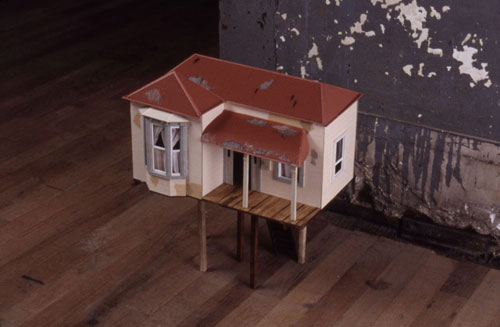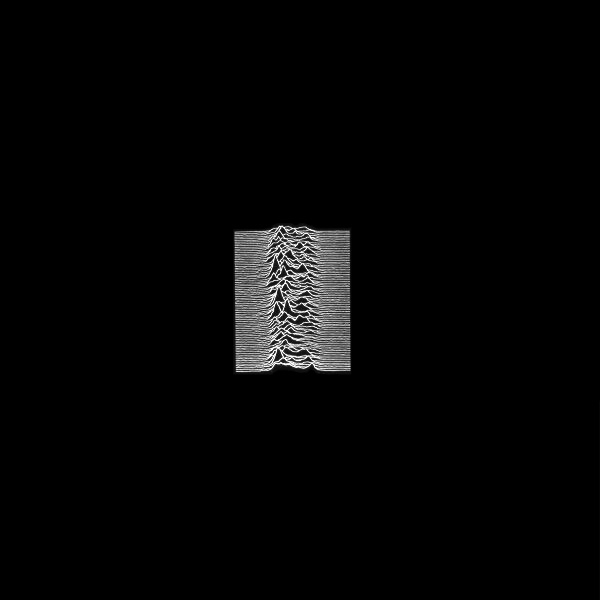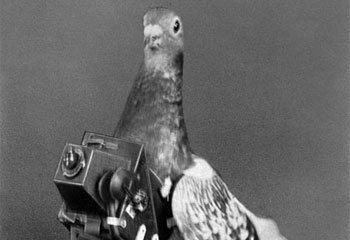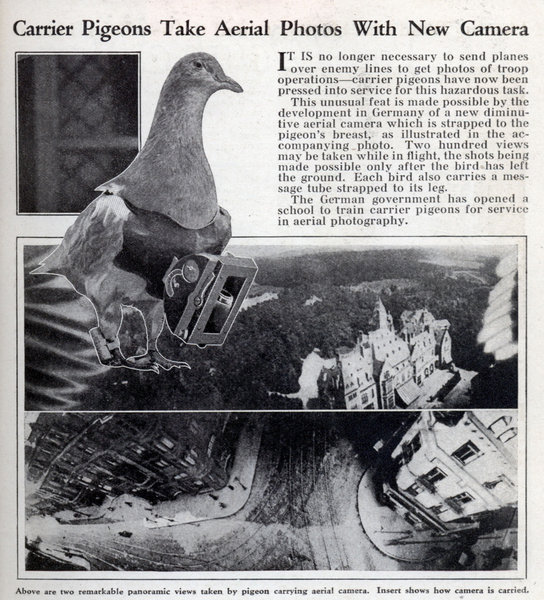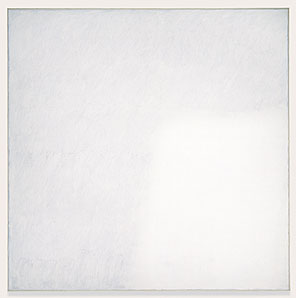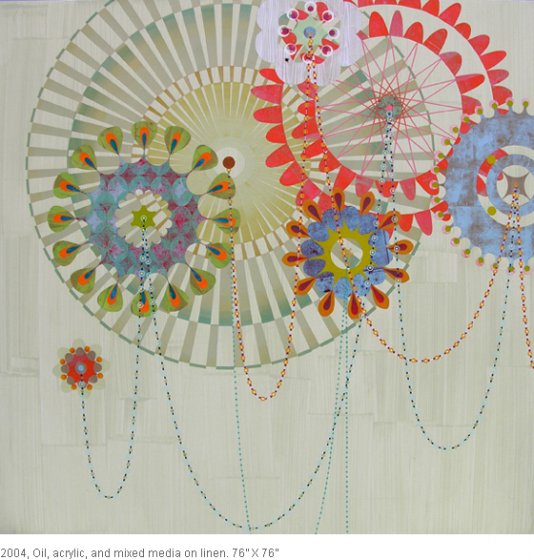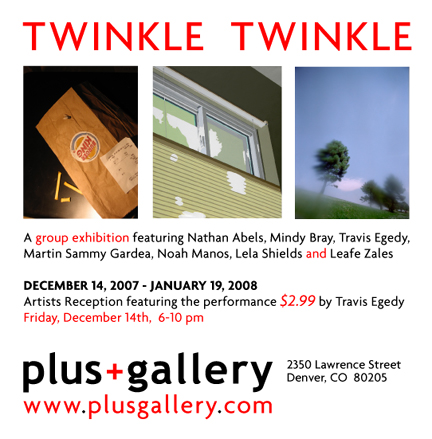
Thursday, November 29, 2007
Upcoming Exhibition
Labels:
art,
denver,
exhibitions,
Nathan Abels,
plus gallery
Wednesday, November 28, 2007
Leadville's Ice Palace
I was browsing the Western History and Genealogy images on the Denver Library website and stumbled on this fascinating late-nineteenth century wonder from Leadville, CO. All images and written content following the images is quoted from the Denver Public Library Western History Department/website:
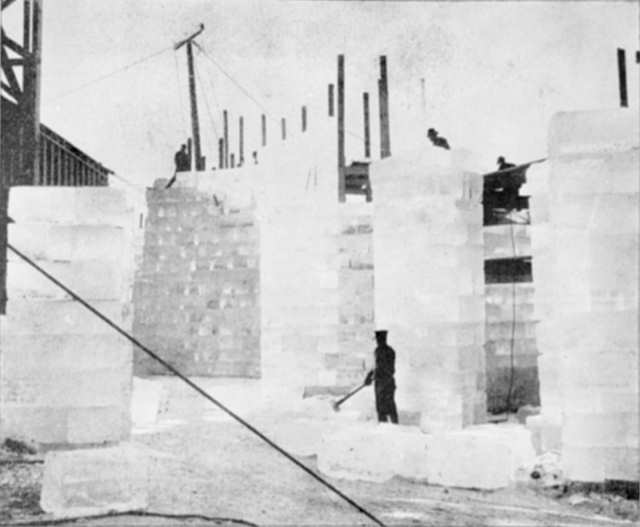 "Leadville, Lake County, Colorado, Ice Palace under construction. Men work among blocks of ice; wooden poles rise in the background, 1896"
"Leadville, Lake County, Colorado, Ice Palace under construction. Men work among blocks of ice; wooden poles rise in the background, 1896"
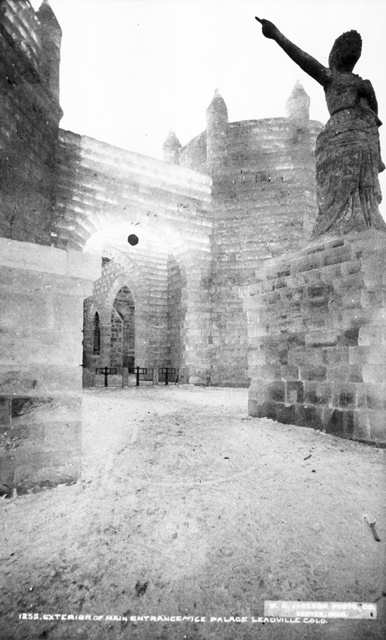
"Exterior view of the main entrance of Leadville's Ice Palace built for the 1896 Winter Crystal Carnival in Colorado. The site is known as Capitol Hill and is between West Seventh and West Eighth Streets from Spruce to Leiter. Architect C.E. Joy and Director General Wood designed the 320 x 450 foot Norman style medieval ice castle which was constructed of twenty-two deep ice blocks cut from local lakes and rivers. The entrance features an ice archway with turnstiles flanked by octagonal turrets, 90 feet high, with panelling and imitation battlements. A nineteen foot tall allegorical ice sculpture of a maiden in gown and crown, with her right arm pointing toward mines east of town, stands on a twelve foot high pedestal at the main entrance. She holds a scroll with gold letters $200,000,000 representing mining revenue produced through 1894."
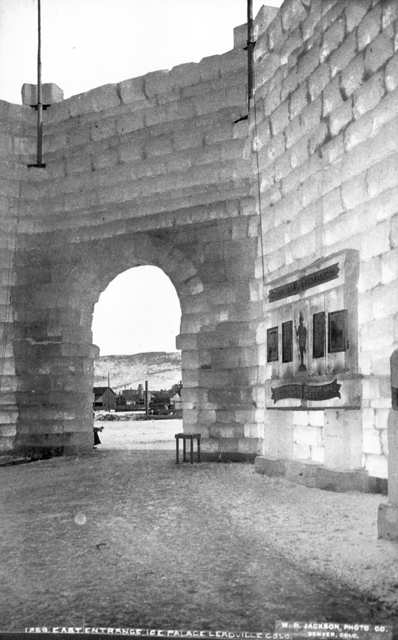 "Interior view of the east entrance (Seventh Street) to Leadville's Ice Palace, which was built for the 1896 Winter Crystal Carnival in Colorado. The east entrance archway includes the Colorado Midland Railroad exhibit with painted logo of a standing American Indian on a glass plate and scenic photographs of their route frozen in colored ice blocks. A person squats outside the archway. There is a small wooden seat to the right of the entrance. Flag poles are braced in the corners of the ice wall. Wooden structures in Leadville can be seen in the distance."
"Interior view of the east entrance (Seventh Street) to Leadville's Ice Palace, which was built for the 1896 Winter Crystal Carnival in Colorado. The east entrance archway includes the Colorado Midland Railroad exhibit with painted logo of a standing American Indian on a glass plate and scenic photographs of their route frozen in colored ice blocks. A person squats outside the archway. There is a small wooden seat to the right of the entrance. Flag poles are braced in the corners of the ice wall. Wooden structures in Leadville can be seen in the distance."
 "Exterior front view of Leadville's Ice Palace built for the 1896 Winter Crystal Carnival in Colorado. Features include octagonal turrets, 90 feet high, with panelling and imitation battlements. A nineteen foot tall allegorical ice sculpture of a maiden pointing her right arm toward the mines east of town sits on a twelve foot high pedestal at the main entrance. United States and Colorado state flags fly from poles on top of the turrets. Inside the castle was a skating rink, ballroom, restaurants, reception rooms, and museum exhibits."
"Exterior front view of Leadville's Ice Palace built for the 1896 Winter Crystal Carnival in Colorado. Features include octagonal turrets, 90 feet high, with panelling and imitation battlements. A nineteen foot tall allegorical ice sculpture of a maiden pointing her right arm toward the mines east of town sits on a twelve foot high pedestal at the main entrance. United States and Colorado state flags fly from poles on top of the turrets. Inside the castle was a skating rink, ballroom, restaurants, reception rooms, and museum exhibits."
Can you believe this? It must have been amazing in person - it had prismatic search lights outside that reflected off the ice and made the interior glow . The Ice Palace was intended to bring throngs of tourists to Leadville to create jobs, and rescue a dwindling economy. According to an article from Legends of America, "The Ice Palace entertained over 250,000 visitors during it's three month life. But, it was a financial disaster for the investors who built it, so another ice palace of its magnitude has never been built again." Its unfortunate that the Ice Palace didn't achieve all it intended to, but it is admirable for a community to propose such a grand dream.
 "Leadville, Lake County, Colorado, Ice Palace under construction. Men work among blocks of ice; wooden poles rise in the background, 1896"
"Leadville, Lake County, Colorado, Ice Palace under construction. Men work among blocks of ice; wooden poles rise in the background, 1896"
"Exterior view of the main entrance of Leadville's Ice Palace built for the 1896 Winter Crystal Carnival in Colorado. The site is known as Capitol Hill and is between West Seventh and West Eighth Streets from Spruce to Leiter. Architect C.E. Joy and Director General Wood designed the 320 x 450 foot Norman style medieval ice castle which was constructed of twenty-two deep ice blocks cut from local lakes and rivers. The entrance features an ice archway with turnstiles flanked by octagonal turrets, 90 feet high, with panelling and imitation battlements. A nineteen foot tall allegorical ice sculpture of a maiden in gown and crown, with her right arm pointing toward mines east of town, stands on a twelve foot high pedestal at the main entrance. She holds a scroll with gold letters $200,000,000 representing mining revenue produced through 1894."
 "Interior view of the east entrance (Seventh Street) to Leadville's Ice Palace, which was built for the 1896 Winter Crystal Carnival in Colorado. The east entrance archway includes the Colorado Midland Railroad exhibit with painted logo of a standing American Indian on a glass plate and scenic photographs of their route frozen in colored ice blocks. A person squats outside the archway. There is a small wooden seat to the right of the entrance. Flag poles are braced in the corners of the ice wall. Wooden structures in Leadville can be seen in the distance."
"Interior view of the east entrance (Seventh Street) to Leadville's Ice Palace, which was built for the 1896 Winter Crystal Carnival in Colorado. The east entrance archway includes the Colorado Midland Railroad exhibit with painted logo of a standing American Indian on a glass plate and scenic photographs of their route frozen in colored ice blocks. A person squats outside the archway. There is a small wooden seat to the right of the entrance. Flag poles are braced in the corners of the ice wall. Wooden structures in Leadville can be seen in the distance." "Exterior front view of Leadville's Ice Palace built for the 1896 Winter Crystal Carnival in Colorado. Features include octagonal turrets, 90 feet high, with panelling and imitation battlements. A nineteen foot tall allegorical ice sculpture of a maiden pointing her right arm toward the mines east of town sits on a twelve foot high pedestal at the main entrance. United States and Colorado state flags fly from poles on top of the turrets. Inside the castle was a skating rink, ballroom, restaurants, reception rooms, and museum exhibits."
"Exterior front view of Leadville's Ice Palace built for the 1896 Winter Crystal Carnival in Colorado. Features include octagonal turrets, 90 feet high, with panelling and imitation battlements. A nineteen foot tall allegorical ice sculpture of a maiden pointing her right arm toward the mines east of town sits on a twelve foot high pedestal at the main entrance. United States and Colorado state flags fly from poles on top of the turrets. Inside the castle was a skating rink, ballroom, restaurants, reception rooms, and museum exhibits."Can you believe this? It must have been amazing in person - it had prismatic search lights outside that reflected off the ice and made the interior glow . The Ice Palace was intended to bring throngs of tourists to Leadville to create jobs, and rescue a dwindling economy. According to an article from Legends of America, "The Ice Palace entertained over 250,000 visitors during it's three month life. But, it was a financial disaster for the investors who built it, so another ice palace of its magnitude has never been built again." Its unfortunate that the Ice Palace didn't achieve all it intended to, but it is admirable for a community to propose such a grand dream.
Tuesday, November 27, 2007
Bird Imprints on Glass
While browsing flickr yesterday I came upon the most unusual photo group; "Bird Imprints on Glass". Currently there are over 80 photos in the group, and all of them feature the impact of a bird (usually pigeons) against a glass window. I realize this is somewhat morbid, but there is a beauty to the patterns left by the last moment of each birds life - and the amount of detail that is captured in some of these impressions is astounding. Audubon estimates that "about 100 million birds die each year in collisions with buildings and skyscrapers in the U.S. and Canada alone."
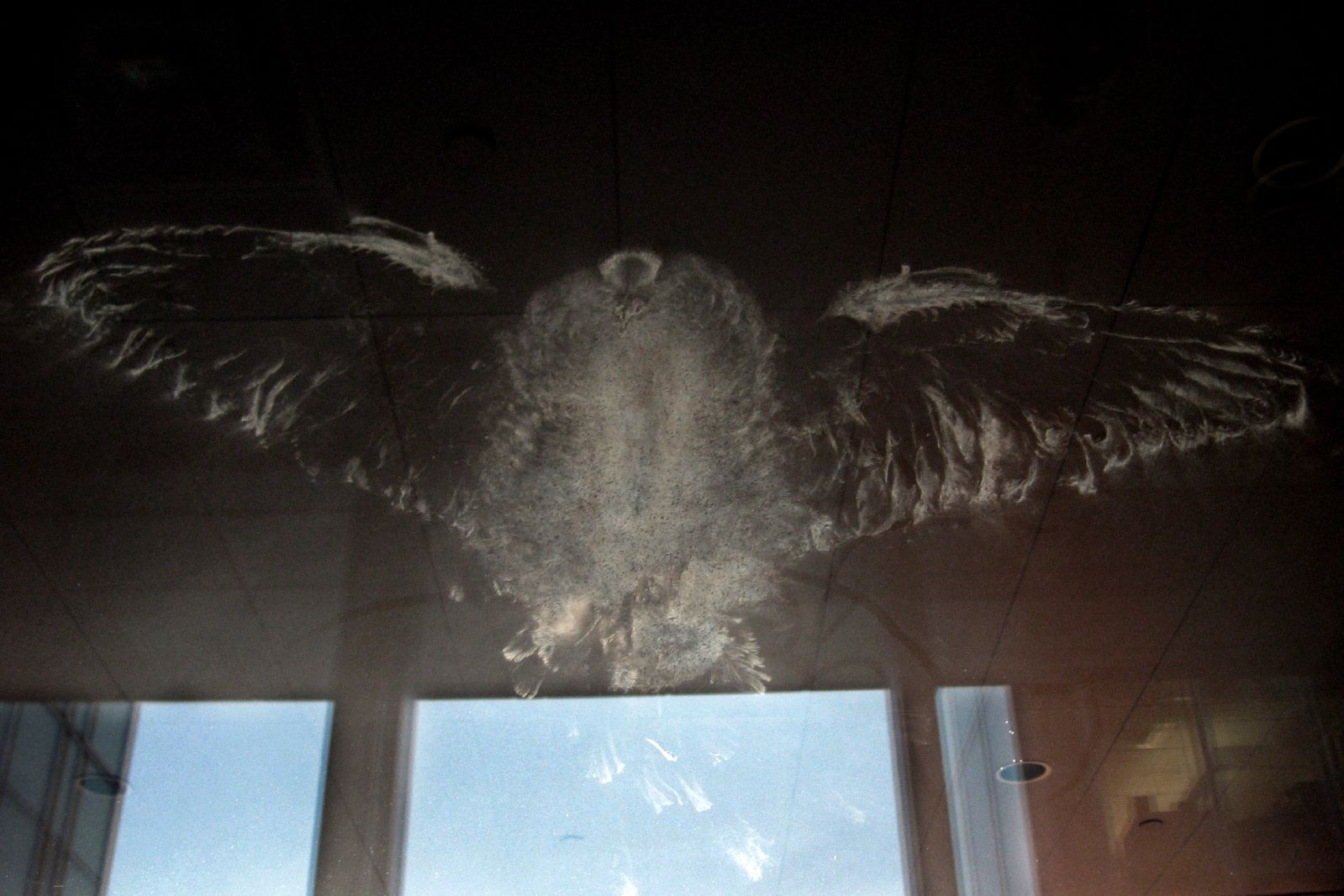 by xinegrrl
by xinegrrl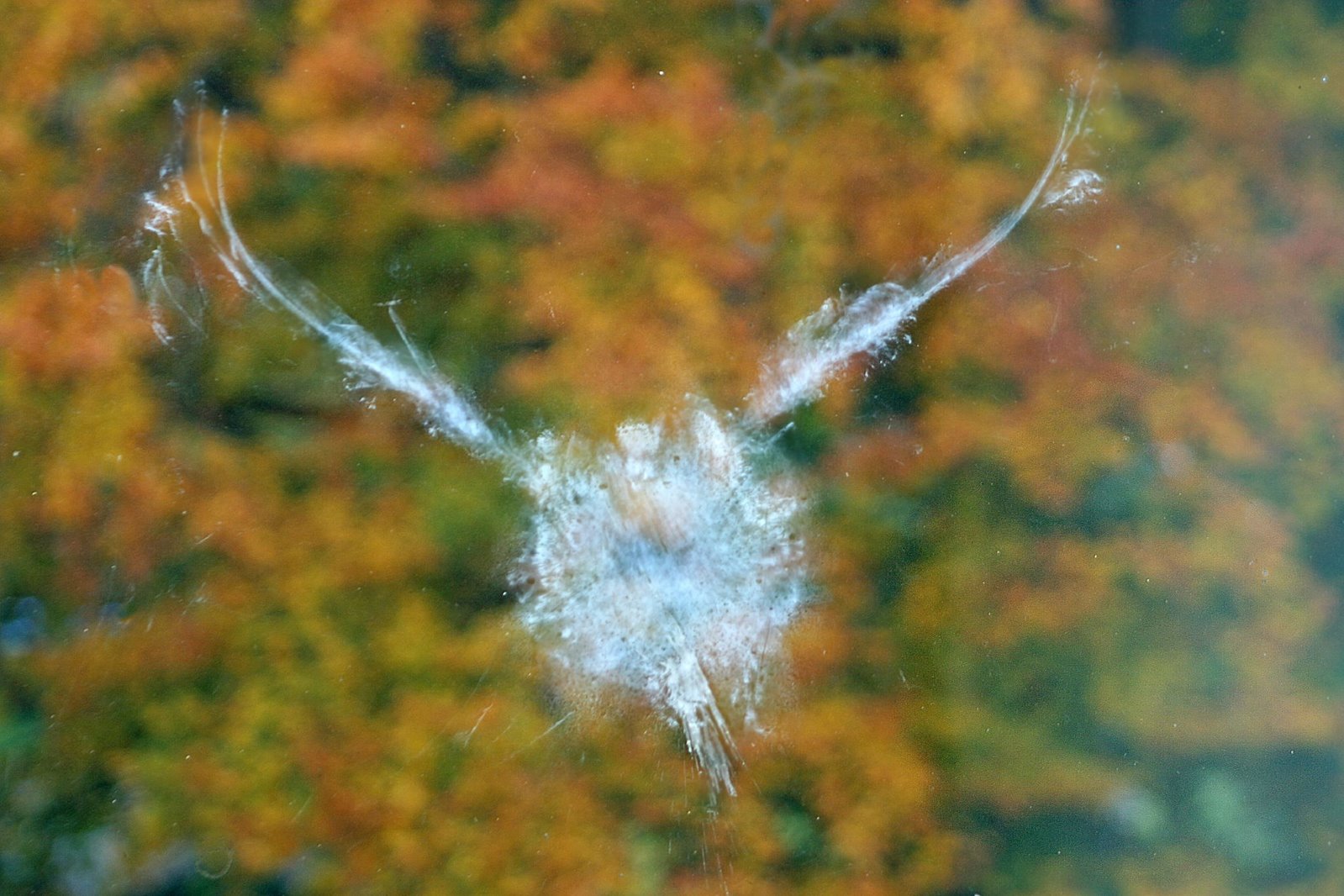 by Karnaphuli
by Karnaphuli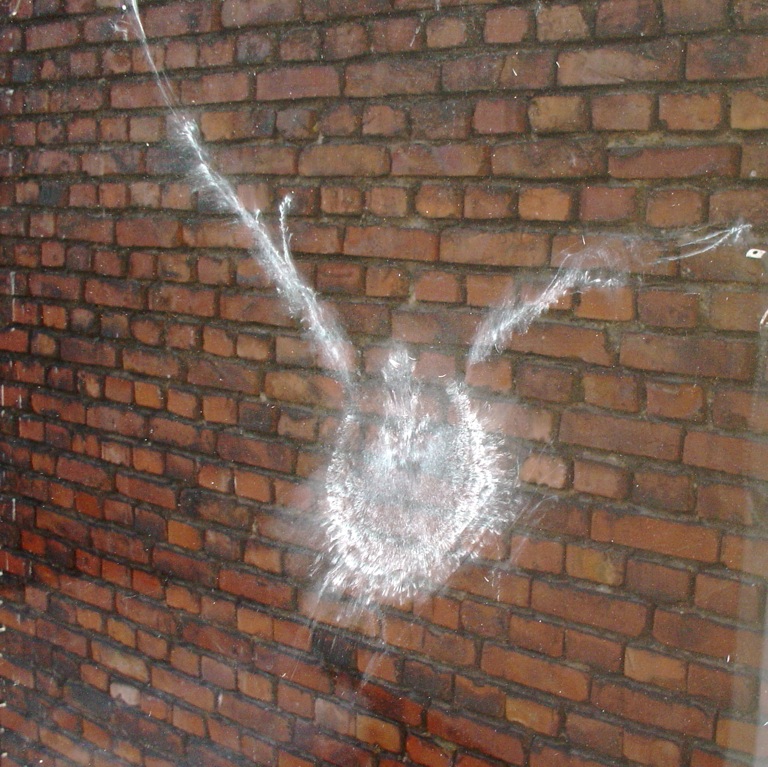 by Superburschi
by SuperburschiIn somewhat related news, check out windows live maps - where you should click on the "birds-eye" view. This point of view is a twist on the google maps and is actually much like what I see while doing aerial survey photography. It is so detailed that you can actually see people on the ground. You'll get that wide-eyed wonder you got the first time you saw aerial views on google maps.
Labels:
aerial,
Bird Imprints on Glass,
birds,
flickr,
maps,
photographs
Monday, November 26, 2007
Guest Blogger: Dan Swartz
Dan Swartz, "I'm So Good Looking"
Mixed media on bristol paper, 2007My guest today is Dan Swartz, a artist, curator, and fellow
Fort Wayne, IN area native. Dan has recently moved back to Fort Wayne
from New York, where he will be making our great hometown into the next
Marfa, Texas with the help of the boys at Soma - the newest artist-run
contemporary space there. You can read Dan's recent editorial on the
promise of a "thriving art community" in Northern Indiana here.
Dan's shortlist for influential and monumental visual artists includes:
1) Marcel Duchamp: He should always be at the top of the list. Wit,
Materiality, and Alchemy. No one gets better.
2) Bas Jan Ader: Questioning the intent behind an action is always
very important to me.
3) Felix-Gonzalez-Torres: Beauty, Relationships, Subversion.
4) Judy Pfaff: Freedom, Charity (to the viewer), and Sensuality in use
of materials.
5) Rachel Foullon: I am slightly hesitant to put her on my fav's list,
because I know and worked for her for a bit, but I cannot deny my
endless fascination with her work and process.
As for Music:-Michael Jackson: The Duchamp of 20th century music? He
pioneered most of the trends that we value currently, and
most of his music has only ripened with age. Perhaps he was
just a bit ahead of his time?
-Madonna: Close second. For all reasons.
-Destiny's Child "Writing On The Wall" Album:
The best in guilty pleasures.
-John Frusciante: Apart from Red Hot Chili Peppers,
he is an amazing artist in his own right.
-Kanye West: after doing everything but claiming to be
the second coming of Christ, then succeeding in staying
relevant for more than another couple of months, I think
Kanye is pretty great. I expect people to lighten up on
him and give more kudos in the future...hopefully that won't
spoil the quality of his music.
TV:
-The only good things on TV right now are
Charlie Rose on PBS and Conan O'Brien.
-Film
-6 degrees of Seperation
-Spanglish
-Dangerous Liaisons
-Contact
-Closer
Labels:
art,
artists,
Dan Swartz,
fort wayne,
Guest Blogger,
Guest List,
Indiana,
movies,
Soma,
tv
Saturday, November 24, 2007
Control
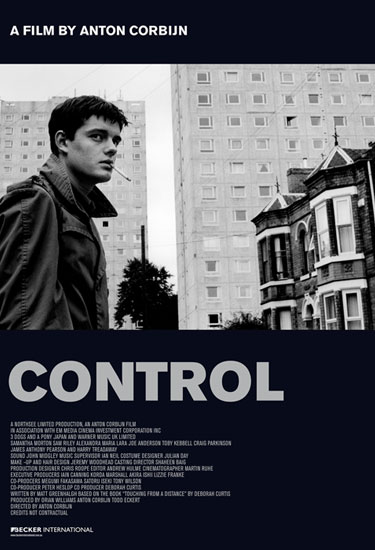 I saw the movie "Control" last night, which is about Ian Curtis of Joy Division. I highly recommend this movie - its given me new appreciation of the band, and of the plight of Ian Curtis. Sam Riley does an incredible job playing Curtis and he looks remarkably similar to the late musician. If you're in Denver - check out the new Neighborhood Flix theater where you can get food, drinks, excellent customer service and enjoy great movies like Control. Here's a video of Joy Division from 1978:
I saw the movie "Control" last night, which is about Ian Curtis of Joy Division. I highly recommend this movie - its given me new appreciation of the band, and of the plight of Ian Curtis. Sam Riley does an incredible job playing Curtis and he looks remarkably similar to the late musician. If you're in Denver - check out the new Neighborhood Flix theater where you can get food, drinks, excellent customer service and enjoy great movies like Control. Here's a video of Joy Division from 1978:
Labels:
Control,
denver,
Ian Curtis,
Joy Division,
music,
music videos
Wednesday, November 21, 2007
Carrier Pigeon Photography and Passenger Pigeon Art

I recently got a portfolio of Audubon prints at an estate sale and in the set of 50 plates, there was a print of the extinct Passenger Pigeons (shown above). I've been really interested in these birds lately, and after remembering Walton Ford's piece "Falling Bough" and all the research that went into it (which can be seen on the season 2 DVD of Art:21) I can safely say that I have been inspired by these birds.
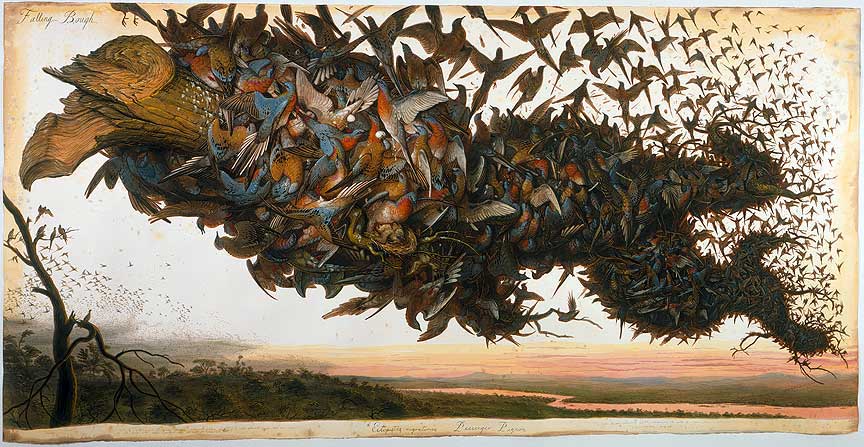 Walton Ford, “Falling Bough”, 2002
Walton Ford, “Falling Bough”, 2002Watercolor, gouache, ink and pencil on paper, 60 3/4 x 119 1/2"
Courtesy Paul Kasmin Gallery, New York
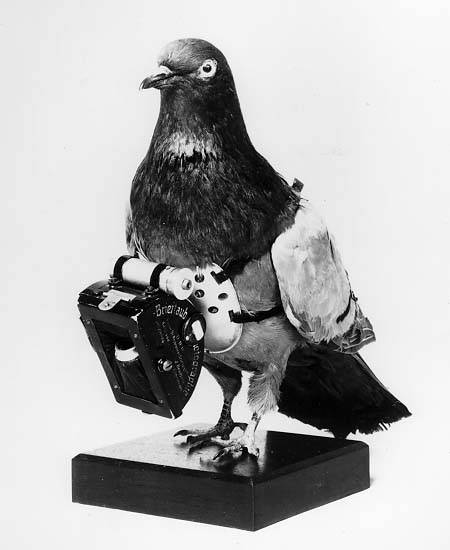 I am also especially interested in how carrier pigeons (not passenger pigeons) were used for reconnaissance in World War I - they were fitted with small cameras and were among the first photographers to take aerial photos in the early 20th Century. As many of you reading know, I do aerial survey photography myself so these pint-sized pioneers in the field of aerial photography are especially fascinating.
I am also especially interested in how carrier pigeons (not passenger pigeons) were used for reconnaissance in World War I - they were fitted with small cameras and were among the first photographers to take aerial photos in the early 20th Century. As many of you reading know, I do aerial survey photography myself so these pint-sized pioneers in the field of aerial photography are especially fascinating.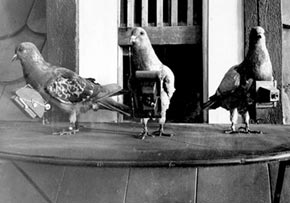
Via PigeonBlog, "In 1903, German Engineer Julius Neubronner combined a small analogue camera with a mechanical timer and attached it around a pigeon's neck. This innovative approach to aerial photography soon raised interest from the German military. Shortly thereafter, exploring the potential for secret aerial photography carried out by pigeons began in earnest. "
The idea of mounting pigeons with cameras has not been lost. Portland based artist/lecturer Amos Latteier recently mounted some pigeons with a digital camera. The slideshow (pdf file) from his "Report on Pigeon Aerial Photography" includes a brief history and examples of his experiments with contemporary pigeon aerial photography. Here is one of the photos he salvaged from a damaged pigeon camera:

In other contemporary technology-based pigeon news - the pigeon blog "provides an alternative way to participate environmental air pollution data gathering. The project equips urban homing pigeons with GPS enabled electronic air pollution sensing devices capable of sending real-time location based air pollution and image data to an online mapping/blogging environment. Pigeonblog is a social public experiment between human and non-human animals." Check it out.
Tuesday, November 20, 2007
White-out
We have the first real cold front/snow storm blowing in tonight, and in preparation I've compiled some nice white-on-white compositions in no particular order:
 "Form-22-3-07 - Noon" by Klængur Gunnarsson
"Form-22-3-07 - Noon" by Klængur Gunnarsson Rudolph Stingel, Untitled
Rudolph Stingel, Untitled
Styrofoam, 2000
 "Form-22-3-07 - Noon" by Klængur Gunnarsson
"Form-22-3-07 - Noon" by Klængur Gunnarsson Rudolph Stingel, Untitled
Rudolph Stingel, Untitled Styrofoam, 2000
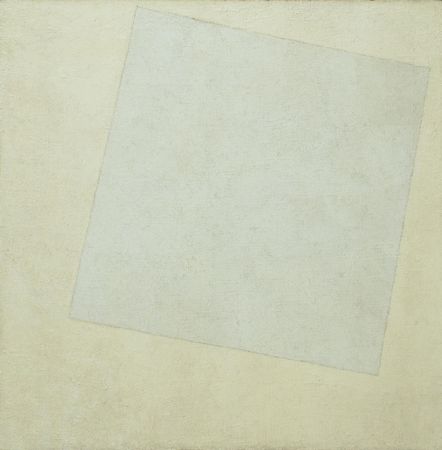 Kazimir Malevich. (Russian, born Ukraine. 1878-1935). Suprematist Composition: White on White. 1918. Oil on canvas, 31 1/4 x 31 1/4"
Kazimir Malevich. (Russian, born Ukraine. 1878-1935). Suprematist Composition: White on White. 1918. Oil on canvas, 31 1/4 x 31 1/4"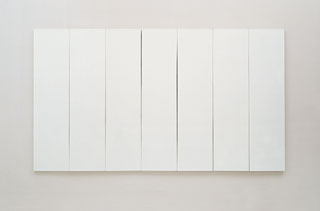 Robert Rauschenberg, "White Paintings" 1951
Robert Rauschenberg, "White Paintings" 1951Monday, November 19, 2007
Keep it Secret. Keep it Safe.

keep it secret. keep it safe - 4 color screen print 25"x13" - $35
Another beautiful print by Dan McCarthy, what more can I say...
Another beautiful print by Dan McCarthy, what more can I say...
Labels:
art,
dan mccarthy,
editions,
printmaking,
prints,
screen print
Grant Barnhart Tanks
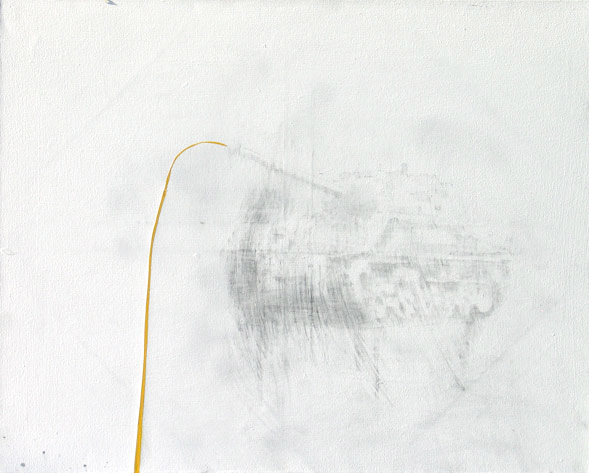


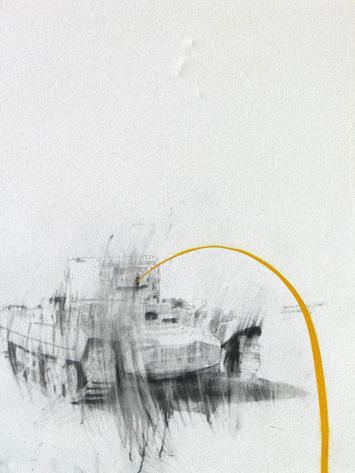 Grant Barnhart has some recent images up of partially erased tanks on paper. He wrote an update on his website about them, saying "I've added some new tank drawings to the site. Each tank is erased graphite and enamel on canvas. The mark making is inspired by a combination of Raushenberg's transfer drawings and [the] Willem De Kooning erasing.. No matter how hard I try to erase the tanks the image still remains. I find the ghost image to have more signifigance and importance than a fully conceived rendering."
Grant Barnhart has some recent images up of partially erased tanks on paper. He wrote an update on his website about them, saying "I've added some new tank drawings to the site. Each tank is erased graphite and enamel on canvas. The mark making is inspired by a combination of Raushenberg's transfer drawings and [the] Willem De Kooning erasing.. No matter how hard I try to erase the tanks the image still remains. I find the ghost image to have more signifigance and importance than a fully conceived rendering." 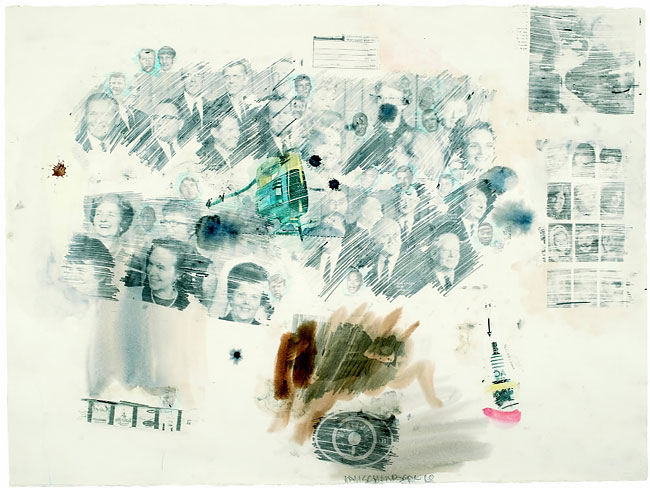
Robert Rauschenberg, Untitled, 1968
The NY Times wrote about Rauschenberg's transfer drawings, saying "The transfer technique, which he [Robert Rauschenberg] took up in 1958, had remarkably few moving parts. It involved soaking newspaper or magazine clippings in solvent, laying them face down on drawing paper and then hatching back and forth across them with a dry pen nib. The results dazzle; in a flickering, almost strobelike effect, images seem to rise to the surface like memories through a scrim — or through the static of a television set. " His "Erased DeKoonig" piece from 1953 is exactly what it sounds like, and as one could imagine it never reproduces well in books or online. You can learn more about it and why it is a commonly referenced cornerstone of modern art - frequently being referenced by minimalists and post-modernists - here.
Labels:
art,
contemporary,
drawing,
grant barnhart,
paper,
tra selhtrow
Guest Blogger: Jeff Page
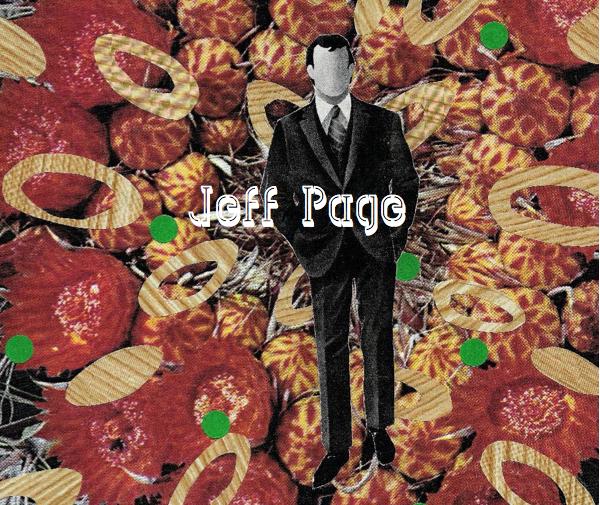
Jeff Page is a collage artist, photographer, and designer based here in Denver. You can find his work here - where he also has links to his etsy site and two great blurb books. Also check out the blog Jenn Ski's praise of his work. Jeff has tons of recommendations and inspiration to share with everyone on this beautiful Monday morning. These lists should give you some insight into his methodology and clue you into more ways to enjoy his artwork:
While involved in making my art, my music likings swing from the obscure to the sensational. I like upbeat pop (like Madonna) or punky dance stuff like LCD Soundsystem or the Rapture to keep my energy up so that I can plow through my projects and dance along the way. But I take my work pretty seriously too and like to think and think and (sometimes) over-think my way through the art making process- which is where the desire for the minimal, yet complicated, electronics of various groups like Monolake or Gas comes in.
MUSIC to make art to:
Lcd Soundsystem- Sound of Silver
Monolake- Polygon Cities
Madonna-Confessions on the Dancefloor
Tarentel- From Bone to Satellite
Thievery Corp- Richest Man in Babylon
My taste for visual Artists also swings from the obscure to the sensational (sort of). I love Designer-ish Art and basically obsess over the careers of Rex Ray and Johnathan Adler. But I also admire and aspire to the thoughtfulness of Wangechi Mutu and Matthew Ritchie's work.
ARTISTS:
Wangechi Mutu
Johnathon Adler
Rex Ray
Ryan McGinness
Matthew Ritchie
What? A TV category? I can’t deny it- TV inspires me. Especially Project Runway, the writers from LOST, the eclectic talent of Amy Sedaris in Strangers with Candy and raunch connoisseurs - Matt Stone and Trey Parker.
TV:
LOST
Project Runway
Strangers with Candy
South Park
The Golden Girls
Thanks Jeff! You can find more guest lists here.
While involved in making my art, my music likings swing from the obscure to the sensational. I like upbeat pop (like Madonna) or punky dance stuff like LCD Soundsystem or the Rapture to keep my energy up so that I can plow through my projects and dance along the way. But I take my work pretty seriously too and like to think and think and (sometimes) over-think my way through the art making process- which is where the desire for the minimal, yet complicated, electronics of various groups like Monolake or Gas comes in.
MUSIC to make art to:
Lcd Soundsystem- Sound of Silver
Monolake- Polygon Cities
Madonna-Confessions on the Dancefloor
Tarentel- From Bone to Satellite
Thievery Corp- Richest Man in Babylon
My taste for visual Artists also swings from the obscure to the sensational (sort of). I love Designer-ish Art and basically obsess over the careers of Rex Ray and Johnathan Adler. But I also admire and aspire to the thoughtfulness of Wangechi Mutu and Matthew Ritchie's work.
ARTISTS:
Wangechi Mutu
Johnathon Adler
Rex Ray
Ryan McGinness
Matthew Ritchie
What? A TV category? I can’t deny it- TV inspires me. Especially Project Runway, the writers from LOST, the eclectic talent of Amy Sedaris in Strangers with Candy and raunch connoisseurs - Matt Stone and Trey Parker.
TV:
LOST
Project Runway
Strangers with Candy
South Park
The Golden Girls
Thanks Jeff! You can find more guest lists here.
Labels:
collage,
denver,
Guest Blogger,
Guest List,
Jeff Page,
movies,
tv
Sunday, November 18, 2007
Paleo-Future
A lecture I attended on Thursday by contemporary artist Matthew Ritchie was thick with theories of physics, quantum mechanics, histories of the formation of the universe, and our perception of the future. Ritchie noted that in the war-era of the 20th century, leaders of nation-states and the great thinkers of that time had big ideas for monuments, ideal cities, and what the future will hold. One example he gave was the proposed monument Tatlin’s Tower - a grand monumental building envisioned and blueprinted by the Russian artist and architect Vladimir Tatlin, but never built. It was supposed to be erected in Petrograd after the Bolshevik Revolution of 1917;
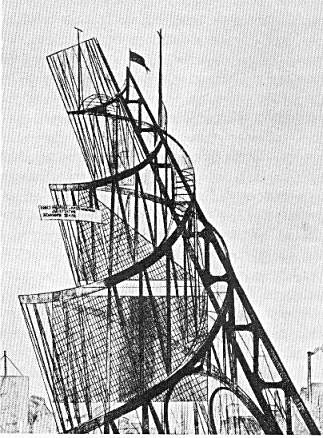 Matthew Ritchie went on to say that after the destruction of two world wars, the proposed trajectory of ideal societies was lost and he quoted Samuel Beckett as saying, "To find a form that accomodates the mess that is the task of the artist now." At this point, Ritchie said Jackson Pollock captured the sythesis of creation and destruction through his so-called 'action paintings' of the late 40s/early 50s:
Matthew Ritchie went on to say that after the destruction of two world wars, the proposed trajectory of ideal societies was lost and he quoted Samuel Beckett as saying, "To find a form that accomodates the mess that is the task of the artist now." At this point, Ritchie said Jackson Pollock captured the sythesis of creation and destruction through his so-called 'action paintings' of the late 40s/early 50s:
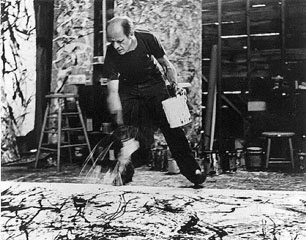 Ritchie asserts that the idealism that was lost at mid-century then led to the sarcastic, recontextualized and appropriated works of the later part of the 20th century that often recycled art of previous eras - pop art, and the work of Sherrie Levine being good examples:
Ritchie asserts that the idealism that was lost at mid-century then led to the sarcastic, recontextualized and appropriated works of the later part of the 20th century that often recycled art of previous eras - pop art, and the work of Sherrie Levine being good examples:
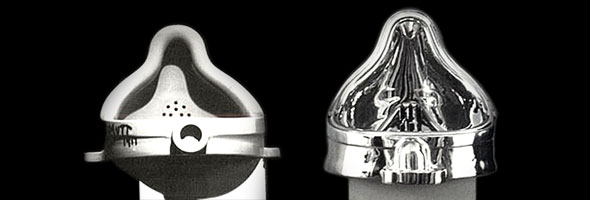 Marcel DuChamp, "Fountain", 1917 and " Fountain (after Marcel Duchamp: A.P.)", by Sherrie Levine, 1991, bronze
Marcel DuChamp, "Fountain", 1917 and " Fountain (after Marcel Duchamp: A.P.)", by Sherrie Levine, 1991, bronze
Levine said, "I try to make art which celebrates doubt and uncertainty."
The 'doubt and uncertainty' that Levine ascribes to her work is especially evident in the barrage of doomsday global warming scenarios we currently see in the news every day:
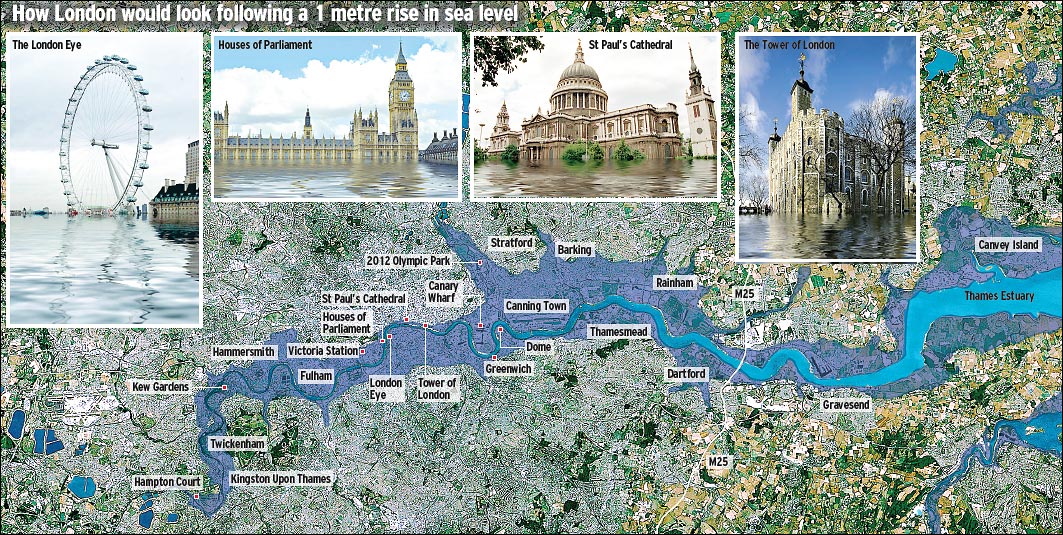 and in popular media/film like Independence Day, Deep Impact, and The Day After Tomorrow.
and in popular media/film like Independence Day, Deep Impact, and The Day After Tomorrow.
Ritchie then assigned the role of art and artists is to show what is not yet known.
For more information and interesting/humorous predictions about the future check out an engaging blog called Paleo-Future; A Look into the Future that Never Was in which many of the visions of the future have been documented and well organized by decade.
 Matthew Ritchie went on to say that after the destruction of two world wars, the proposed trajectory of ideal societies was lost and he quoted Samuel Beckett as saying, "To find a form that accomodates the mess that is the task of the artist now." At this point, Ritchie said Jackson Pollock captured the sythesis of creation and destruction through his so-called 'action paintings' of the late 40s/early 50s:
Matthew Ritchie went on to say that after the destruction of two world wars, the proposed trajectory of ideal societies was lost and he quoted Samuel Beckett as saying, "To find a form that accomodates the mess that is the task of the artist now." At this point, Ritchie said Jackson Pollock captured the sythesis of creation and destruction through his so-called 'action paintings' of the late 40s/early 50s: Ritchie asserts that the idealism that was lost at mid-century then led to the sarcastic, recontextualized and appropriated works of the later part of the 20th century that often recycled art of previous eras - pop art, and the work of Sherrie Levine being good examples:
Ritchie asserts that the idealism that was lost at mid-century then led to the sarcastic, recontextualized and appropriated works of the later part of the 20th century that often recycled art of previous eras - pop art, and the work of Sherrie Levine being good examples: Marcel DuChamp, "Fountain", 1917 and " Fountain (after Marcel Duchamp: A.P.)", by Sherrie Levine, 1991, bronze
Marcel DuChamp, "Fountain", 1917 and " Fountain (after Marcel Duchamp: A.P.)", by Sherrie Levine, 1991, bronzeLevine said, "I try to make art which celebrates doubt and uncertainty."
The 'doubt and uncertainty' that Levine ascribes to her work is especially evident in the barrage of doomsday global warming scenarios we currently see in the news every day:
 and in popular media/film like Independence Day, Deep Impact, and The Day After Tomorrow.
and in popular media/film like Independence Day, Deep Impact, and The Day After Tomorrow.Ritchie then assigned the role of art and artists is to show what is not yet known.
For more information and interesting/humorous predictions about the future check out an engaging blog called Paleo-Future; A Look into the Future that Never Was in which many of the visions of the future have been documented and well organized by decade.
Labels:
film,
Jackson Pollock,
Matthew Ritchie,
movies,
paleo-future,
predictions,
Sherrie Levine,
theories
Saturday, November 17, 2007
Sculptural Vases
Its a rare overcast day here in Denver, and I'm thankful for the orchid in the window sill on days like this . I think getting flowers should be part of everyones grocery list , especially on a dreary day, so here are a few clever vase ideas to display your findings: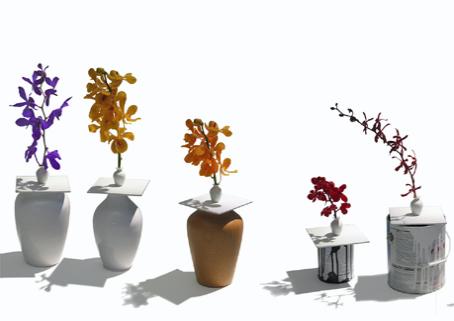 Vasemaker by Ron Gilad - this is a great design that allows you to buy just one stem at the florist and elegantly display it with nearly anything that holds water - there is a hole in the bottom of the tile that goes through the small white vase so the stem of the flower goes into the larger container. As greener grass designs puts it " Place VaseMaker over any container and it makes an instant new vase. This ingenious design has the ability to take even the most mundane vessels and containers and turn them into works of beauty."
Vasemaker by Ron Gilad - this is a great design that allows you to buy just one stem at the florist and elegantly display it with nearly anything that holds water - there is a hole in the bottom of the tile that goes through the small white vase so the stem of the flower goes into the larger container. As greener grass designs puts it " Place VaseMaker over any container and it makes an instant new vase. This ingenious design has the ability to take even the most mundane vessels and containers and turn them into works of beauty."
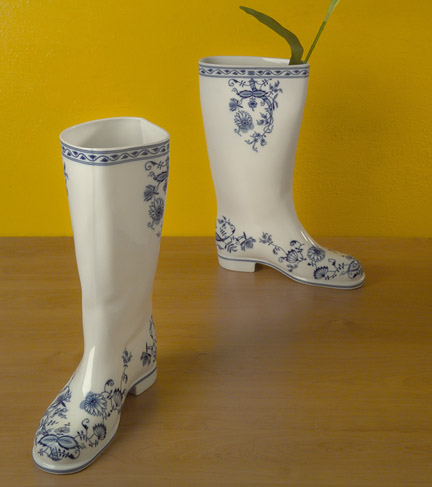 Waterproof Porcelain Vase, by Designer: Maxim Velčovský
Waterproof Porcelain Vase, by Designer: Maxim Velčovský 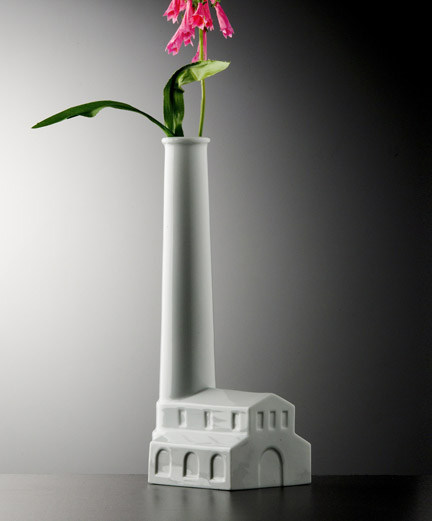 Factory by Designer: Maxim Velčovský - you've got to love the environmental commentary with this vase
Factory by Designer: Maxim Velčovský - you've got to love the environmental commentary with this vase
 Vitruvian sculpture vase on ebay - strange, but I'm imagining all of the different hair styles you could give these faces with leafy floral arrangements
Vitruvian sculpture vase on ebay - strange, but I'm imagining all of the different hair styles you could give these faces with leafy floral arrangements
 Vasemaker by Ron Gilad - this is a great design that allows you to buy just one stem at the florist and elegantly display it with nearly anything that holds water - there is a hole in the bottom of the tile that goes through the small white vase so the stem of the flower goes into the larger container. As greener grass designs puts it " Place VaseMaker over any container and it makes an instant new vase. This ingenious design has the ability to take even the most mundane vessels and containers and turn them into works of beauty."
Vasemaker by Ron Gilad - this is a great design that allows you to buy just one stem at the florist and elegantly display it with nearly anything that holds water - there is a hole in the bottom of the tile that goes through the small white vase so the stem of the flower goes into the larger container. As greener grass designs puts it " Place VaseMaker over any container and it makes an instant new vase. This ingenious design has the ability to take even the most mundane vessels and containers and turn them into works of beauty." Waterproof Porcelain Vase, by Designer: Maxim Velčovský
Waterproof Porcelain Vase, by Designer: Maxim Velčovský  Factory by Designer: Maxim Velčovský - you've got to love the environmental commentary with this vase
Factory by Designer: Maxim Velčovský - you've got to love the environmental commentary with this vaseFriday, November 16, 2007
Abstracted photographs of Katsuhiro Saiki
 Katsuhiro Saiki, "DIVIDE #1", 2003
Katsuhiro Saiki, "DIVIDE #1", 2003C-prints mounted to plexiglas
48 x 23 7/8 inches (121.9 x 60.6 cm) each of 3 panels
48 x 71 5/8 inches (121.9 x 181.8 cm) overall
 "DIVIDE #2", 2003
"DIVIDE #2", 2003C-prints mounted to plexiglas
48 x 23 7/8 inches (121.9 x 60.6 cm) each of 3 panels
48 x 71 5/8 inches (121.9 x 181.8 cm) overall
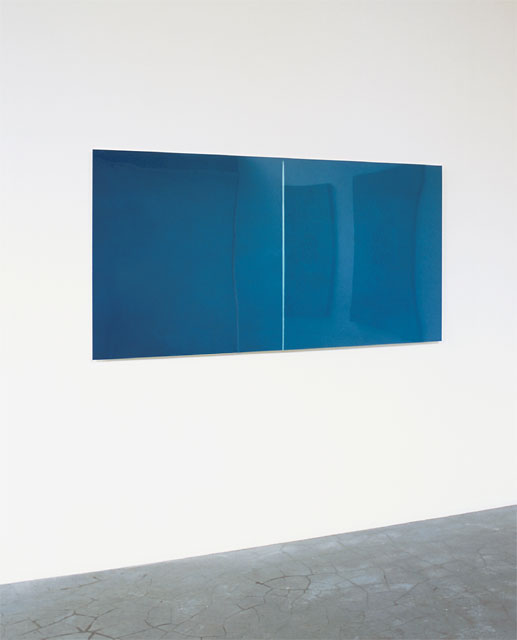 "DOUBLE" (installation view), 2001
"DOUBLE" (installation view), 2001C-print mounted to plexiglas
35 3/8 x 70 7/8 inches
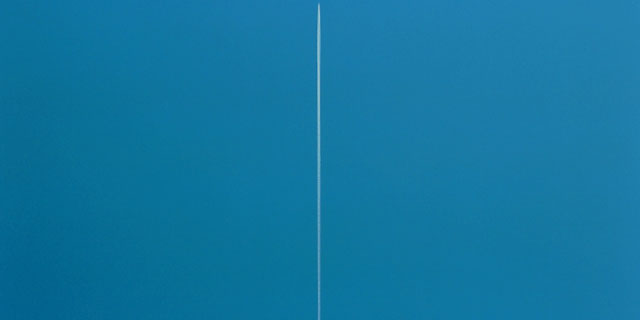 "DOUBLE", 2001
"DOUBLE", 2001C-print mounted to plexiglas
35 3/8 x 70 7/8 inches
There is a pleasant abstraction to these photographs that references paintings, like the wax and covered pieces of Brice Marden:
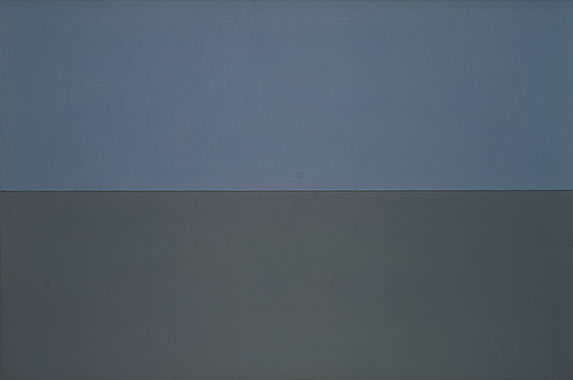
Brice Marden, "Grove IV". 1976, Oil and Wax on Canvas, two panels, 72x108 overall
and these photos also bring to mind the palindrome mountain paintings of Ed Ruscha:

Labels:
brice marden,
contemporary,
Ed Ruscha,
Katsuhiro Saiki,
Painting,
photographs,
photography
Subscribe to:
Posts (Atom)




